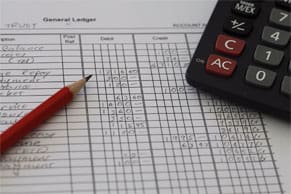Consumers’ appetites for dining remain strong, but the rising costs of running a restaurant have made it difficult for restaurant owners to both meet diners’ demands and maintain healthy profit margins. According to a 2024 Restaurant Association of America report, 38% of restaurant operators say they were not profitable in 2023, with 97% citing higher food costs as a challenge for their business.
A restaurant’s ability to keep its food costs in check is a core determinant of its success. To that end, restaurant operators must understand how to track, calculate and minimize their food and inventory costs if they want to protect their bottom line and build a profitable business. Effective strategies to help restaurants reduce their food costs over time include conducting data-driven cost analyses, optimizing inventory management practices, strategically engineering menus, training staff and using restaurant management software.
What Are Restaurant Food Costs?
A restaurant’s food costs, also defined as its cost of goods sold (COGS), is a financial metric that represents the total value of all the food and beverages sold during a given timeframe, as well as any food waste generated during that period.
To calculate food costs, restaurants can use the following formula:
Food costs (COGS) = Beginning inventory + Purchased inventory – Ending inventory
where:
- Beginning inventory refers to the cost of the food a restaurant has in its inventory at the beginning of a given period, often a month.
- Purchased inventory refers to any new food items purchased during that period.
- Ending inventory is the value of food left over at the end of the period.
Restaurant operators must calculate food costs accurately to avoid over-ordering or overspending on ingredients and supplies for the short term, as either condition is not only wasteful but eats into profits. Analyzing historical food cost data provides valuable insights into ingredient and beverage orders over time. With this information at hand, restaurant operators can regularly refine their ordering and inventory strategies to drive down costs while meeting customer demand.
Key Takeaways
- Restaurant food costs encompass all ingredients and supply expenses, plus waste, for a specific period.
- Strategies for controlling food costs can be applied to various areas, including inventory management, food handling, and menu engineering.
- Restaurants must set clear and measurable KPIs to ensure that daily operations align with food-cost-control goals.
- Staff training on how to work toward minimizing waste and meeting metrics is also key to cutting food costs.
What Is Restaurant Food Cost Control?
Restaurant food cost control is the practice of monitoring and managing the expenditures associated with food ingredients and preparation in order to reach and maintain profitability. Because food sales are a restaurant’s main source of revenue, controlling food costs is a primary fiscal objective for restaurant owners. This effort is crucial for all food service businesses from local coffee shops to large franchise operations with locations across the country.
Effective food cost control helps restaurants understand how much they’re paying to source, store and prepare their menu items, which, in turn, allows them to identify which items are profitable, which are not and which need reformulation to improve margins.
By tracking food costs in relation to total food sales—a key performance indicator (KPI) known as food cost percentage—restaurant operators can benchmark their performance against industry standards to confirm whether their approach is on par with or better than that of their competitors. Additionally, accurate food cost calculations and control mechanisms help restaurant owners make better decisions about the future of their business, in areas such as customer demand forecasting, revenue goal setting and mapping out growth and expansion plans.
What Components Make Up a Restaurant’s Food Costs?
A restaurant’s food costs are composed of multiple elements. For most restaurant businesses, these elements include the cost of menu-item ingredients, beverages and liquor, food waste and spillage, and supplies like takeout containers and packaging. With a complete view of these expenditures, restaurant operators can make sound decisions about how and where to source their ingredients, what inventory levels to maintain and how to price their dishes for maximum profitability.
- Ingredients and condiments: Menu-item ingredients account for the majority of a restaurant’s food costs. These include fresh ingredients, like meat, dairy and produce; dry ingredients, like grains, spices and flour; and condiments, like salt, ketchup and soy sauce. Consider an Italian restaurant that specializes in wood-fired pizzas. Its monthly food costs might include purchases of flour, canned tomatoes, fresh mozzarella, toppings (such as pepperoni or basil) and condiments like balsamic vinegar.
- Beverages: Liquor and beverages are an integral part of the restaurant experience for many diners, ranging from the sodas consumers buy in a fast-food burger joint to the fine wines they order to pair with a celebratory steak dinner in a posh bistro. Restaurants must factor what they spend on these items into their food cost calculations. In the case of a burger joint, that means accounting for the cost of the soda mixes it needs to fill its self-service drink fountains, while a high-end Italian restaurant might factor in the cost of 100 bottles of Barolo to restock its wine cellar.
- Waste and spillage: Restaurants must still pay for any food they waste, including ingredients that expire before the chef has a chance to integrate them into a dish and the vegetables and other food items that fall on a restaurant’s kitchen floor or are otherwise unusable. Even the most careful chefs and cooks will occasionally drop, spill, or miss the mark on a dish they’re preparing, forcing them to use additional ingredients to repair the mistake or remake the dish from scratch. Every time this happens, a restaurant’s food costs go up.
- Takeout containers and packaging: With the growth of takeout and delivery services, many restaurants now face significant costs for takeout containers and packaging. Though not food items themselves, they are directly tied to food sales. Some restaurants incorporate these costs into their food cost calculations, while others categorize them as operating expenses or create a separate category for packaging. The classification might depend on the volume of takeout business or the restaurant’s accounting practices.
What Is the Ideal Restaurant Food Cost Percentage?
Food cost percentage is a KPI that allows restaurant operators to compare the cost of sourcing and preparing menu items to their total food sales. By tracking this metric and comparing the results against industry benchmarks, restaurant owners can take steps to maintain a healthy cost-to-sales ratio and maximize their profit margins while continuing to serve food their customers love.
On average, successful restaurants in America maintain a food cost percentage that falls between 28% and 35% of total food sales, though this value varies depending on the kind of establishment they operate and the customer base they serve. For example, fast-casual restaurants that thrive on volume typically aim for a lower food cost percentage, often around 25% to 30%, while a fine-dining establishment might have percentages of 35% or higher to account for using premium ingredients.
Food cost percentage is calculated by dividing a restaurant’s total food costs, or COGS, by its total food sales. The ratio is tallied using the following formula:
Food cost percentage = (COGS / Total food sales) x 100
How Does Food Cost Differ from Prime Cost?
A restaurant’s prime cost includes both its food cost (COGS) and its labor cost. Together, these figures account for most of a restaurant business’s variable expenses, making prime cost a metric that reveals how much revenue goes toward preparing food and paying staff. Here’s the formula for prime cost:
Prime cost = COGS + Labor costs
Among the labor costs restaurants must factor in when calculating prime cost are the salaries paid to full-time employees and the hourly wages paid to front-of-house staff, if applicable, plus taxes and any employee benefits offered. A restaurant’s prime cost can vary from month to month, especially for businesses that deal with seasonal peaks and troughs in traffic, such as beachside bars or ski resort lodges. To help monitor performance across different periods, even when absolute sales figures vary from month to month, restaurants can calculate prime cost as a proportion of their total sales, known as prime cost percentage:
Prime cost percentage = [(COGS + Labor costs) / Total sales] x 100
As with food cost percentage, a restaurant’s prime cost percentage will depend on its operating model and customers’ expectations. That said, according to TheRestaurantExpert.com founder David Peters, most restaurant organizations should aim for a value between 60% and 65%.
21 Effective Strategies to Control Food Costs
Food costs represent a significant percentage of a restaurant’s overall expenses, and controlling them is an ongoing challenge. Economic pressures, such as inflation and food shortages, can rapidly increase costs, forcing restaurants to seek more revenue or risk closure. A major fast-food chain had to close multiple locations in 2023 when franchises couldn’t meet the increased sales threshold of $1.2 million, up from $1 million in 2022.
To minimize expenses and maximize revenue, restaurant operators need to adopt and continually hone their food cost control strategies, in both the short and long term. The following 21 proven strategies are spread among seven key areas: inventory management, cost analysis, procurement, operations, menu optimization, staff training, and strategic goal-setting.
Inventory Management
Food and liquor make up the vast majority of a restaurant’s inventory costs. As such, a restaurant’s ability to manage its food inventory is directly linked to its financial performance and success. By implementing effective inventory management hacks and technologies, restaurant operators can put themselves in the best position to order the optimal amount of food at the right time, based on market conditions and customer demand. Here are five key strategies to improve control of food costs through effective inventory management.
- Optimize stock levels using yield management: Yield management is used to determine the precise quantity of ingredients required for each menu item, based on expected demand. It involves analyzing portion sizes and potential waste to tighten accuracy of inventory orders. For instance, a fish-and-chips shop can calculate the exact amounts of haddock, potatoes, and oil needed for weekly orders, adding a buffer for waste. If discrepancies occur, such as running out of oil prematurely, chefs can adjust recipes or inventory orders to align with yield targets.
- Implement FIFO for efficient inventory rotation: A significant portion of restaurant food waste occurs in inventory, due to over-ordering or improper storage of ingredients. Using the first in, first out (FIFO) inventory management method, restaurants position their oldest ingredients and food supplies at the front of their inventory, rather than stocking shelves indiscriminately as new items are received. Perishable ingredients and those closest to their expiry dates are, therefore, easy to access and grabbed first for food preparation, reducing waste and its associated cost.
- Monitor raw material quality and streamline ordering: Implement a system for monitoring raw material quality, starting with inspection upon delivery from suppliers. Check for freshness, correct temperatures, and signs of damage or contamination. Once in-house, continue monitoring through proper storage and regular checks. Use appropriate storage solutions and make sure expiration dates are clearly visible. These practices help maintain quality, reduce spoilage and minimize waste. And a clear understanding of your inventory makes it easier to align purchases with customer demand to avoid over- and underbuying. This comprehensive approach can help restaurants avoid paying the price in terms of additional food costs and waste.
- Optimize specials for inventory management and sales: An effective way for restaurants to reduce food waste is to create special dishes using ingredients that are about to expire and add them to their daily menu. For example, a seafood restaurant with an overstock of tuna steaks that are set to expire in two days might add a seared tuna appetizer and grilled tuna main to its daily menu and encourage its staff to upsell these items to help clear out their stock. This inventory management approach is a win-win, as the restaurant turns potential food losses into profits.
- Maintain accurate inventory counts: The key to accurate inventory management is consistency, in both the methods used and timing. Best practices vary depending on the restaurant’s specific needs, but many successful operations perform inventory counts weekly or biweekly, with more frequent spot checks on high-value or fast-moving items. Consistency ensures that restaurants are comparing “apples with apples” when tracking their food cost percentages over time. To avoid bottlenecks and human error, many restaurant operators are implementing a point-of-sale (POS) system that integrates with inventory management software to track food inventory automatically.
Cost Analysis and Reduction
Cost analysis is a systematic review of a restaurant’s expenditures in which restaurant operators categorize all costs according to their direct and indirect effects on food and services. Even small improvements in cost-efficiency can have major financial benefits. For example, if a restaurant group finds a way to cut ingredient costs for its top-selling dish by $1 per plate and sells 100 plates daily across each of its 10 locations, it could achieve a monthly food cost reduction of roughly $30,000. Here are three strategies to improve cost analysis and reduction.
- Track expenses to assess food costs accurately: Keep detailed records of all food-related expenditures, including ingredients, liquor and beverages, over a given time frame to gain a complete view of food costs. For instance, a fast-food burger chain would track how much it spends on ground beef, buns, toppings such as lettuce and tomatoes, condiments, potatoes for French fries, soft drink mixes, and so on. This data can be used to calculate food cost percentages and inform cost reduction strategies. Accuracy can be augmented by reconciling regular physical inventory counts with digital records.
- Control portions to minimize waste and boost profits: Few sights are more disheartening to a chef than half-eaten plates of food. This often means their portion sizes were too large, forcing customers to leave food on the plates. The solution is to adjust portion sizes, in line with customers’ appetites, to strike the right balance between value for money and unnecessary excess. And by reducing waste through proper portion control, food costs will decrease while sales remain stable, thereby increasing the profit margin on each dish.
- Monitor actual vs. theoretical food costs for accuracy: A restaurant’s theoretical food costs represent the dollar amount it should have spent on ingredients over a given timeframe, based on the number of dishes it sold during that period. This figure assumes that every portion was perfectly sized, no food was wasted, no mistakes were made in the kitchen, and no employee theft occurred. A restaurant’s actual food costs, on the other hand, represent the real amount spent over that period after these factors are accounted for. By tracking the difference between these figures, restaurant operators can see how much profit they’re losing due to inconsistent portion sizes, invoicing errors, food waste, employee theft, and other factors that unnecessarily drive up costs—and which all can be targets of cost reduction strategies.
Supplier and Procurement
Building and maintaining good relationships with suppliers is critical for any business. Effective supplier relationship management (SRM) leads to better planning capabilities, more flexibility when faced with unforeseen events that can affect the ingredient supply chain, and, perhaps best of all, preferential pricing. Below are four key SRM strategies to help restaurant operators manage food costs effectively.
- Negotiate competitive prices and terms: The cost of raw ingredients is in constant flux. To keep food costs more predictably under control, restaurant operators must constantly communicate with suppliers to negotiate the best possible prices and most favorable terms (such as payment schedules, delivery flexibility, and volume discounts). The stronger a restaurant’s relationship with its suppliers, the more likely it is that both parties will settle on mutually acceptable rates and terms that allow them to hit their profit targets.
- Ensure transparency in vendor contracts: Restaurants should set clear contractual obligations with food vendors, specifying the quantity, quality, pricing, and delivery times for their orders. These detailed contracts serve as a reference point to monitor vendor performance and manage service quality. Without this level of transparency, minor deviations can go unnoticed, driving up a restaurant’s food cost percentage over time. Clear contracts enable restaurants to quickly identify discrepancies between agreed-upon terms and actual performance, providing a basis for investigating unexpected cost increases and promptly addressing issues.
- Build strong supplier relationships: The best supplier relationships are built on frequent communication, close collaboration, and mutual benefit. By understanding their suppliers’ goals and challenges, restaurants can establish a working relationship that addresses the supplier’s needs while also meeting their own requirements for ingredient quality, price and availability. These relationships often create cost-saving opportunities. For instance, if a restaurant’s seafood supplier suddenly finds itself with an overstock of lobster after one of its biggest customers cancels its monthly order, the restaurant may be able to purchase the excess stock at a discounted price and serve it to its customers as a weekly special.
- Leverage group purchasing for savings: Purchasing ingredients in bulk can minimize food costs, but not all restaurants have the buying power to negotiate bulk deals with preferred suppliers. In such cases, joining a group purchasing organization (GPO) is an option. GPOs pool the resources of multiple small restaurants, giving them more leverage to obtain high-quality ingredients at competitive prices. That said, restaurants should also consider the trade-offs of using GPOs. Most notably, this approach may limit the direct vendor relationships that many quality-focused restaurant operators value highly.
Operational Efficiency and Technology
The more efficiently a restaurant operates, the less time and money it spends on managing its processes, leading to reduced overall costs, including food costs. To that end, restaurateurs increasingly rely on technology to squeeze efficiency gains out of their operations at every level, including food cost management. This includes automating labor-intensive tasks to reduce errors in food handling and speed payments.
- Automate processes for efficiency gains: Restaurants can rely on automation to handle many tasks, including supplier and inventory management, demand forecasting, and order processing via their POS system. These automation technologies can execute these tasks with greater speed and accuracy than humans can, potentially dropping food costs. For example, inventory systems can prevent overordering, thus reducing waste from spoilage. Price demand forecasting helps refine purchasing needs, while automated portioning can foster consistency in use of ingredients.
- Implement portion control for cost-effective servings: Through careful portion control, restaurants can determine the quantity of food that goes into each dish served to customers, as well as stabilizing the cost of ingredients required to prepare those dishes. This practice helps reduce over-portioning during preparation, minimizes kitchen waste, and maintains quality standards. Consider an ice cream shop that serves 200 small ice cream cones to its customers each week. Knowing that every small cone it serves requires one-half cup of cream, three tablespoons of sugar, and one egg to prepare, the shop can order just enough of these key ingredients to meet its expected demand, plus a small percentage of reserve stock to account for fluctuations in demand.
Menu Optimization
One of the most effective ways restaurants can manage and control food costs is to engineer their menus to generate as much revenue as possible while refining ingredient use. This approach, known as strategic menu engineering, requires a systematic analysis of individual menu items comparing sales of a given dish to the cost of preparing it. Below are two of the most common and effective menu optimization practices restaurant owners can employ to balance profitability and food cost management.
- Price menu items strategically for revenue maximization: There are two categories of profitable dishes in a strategic menu engineering matrix: stars and puzzles. Stars are dishes that are both popular and profitable and that should unquestionably be kept on a menu as they generally contribute to efficient ingredient use. Puzzles, meanwhile, generate high profits but are seldom popular with customers. To benefit from their profit-making potential, restaurants need to try to make them more attractive to customers—for instance, by offering them at a discount for a limited time as an incentive to inspire customer orders.
- Adjust menus to remove low-profit items: There are two categories of low-profit dishes in a strategic menu engineering matrix: plow horses and dogs. Plow horses are popular with customers but deliver low profit margins. By reducing plow horse portion sizes or substituting less-expensive ingredients in their recipes, restaurants can lower their food cost percentage on these menu items to make them more profitable. Dogs, meanwhile, are neither popular nor profit-making and should be removed from a menu as quickly as possible to eliminate unnecessary ingredient costs and potential waste.
Staff Training and Management
By tracking and measuring staff performance in relation to strategic benchmarks, restaurant operators can see where their teams are performing well and where to identify areas for improvement. To achieve this, restaurants should set KPIs and train their staff to meet these objectives in their daily operations, from prep cooks charged with restricting food waste to front-of-house staff tasked with upselling daily specials to help clear inventory. Here are three strategies to consider.
- Evaluate staff performance for efficiency: Set clear objectives with KPIs to measure progress toward meeting food cost reduction goals. For instance, a restaurant operator might task its head chef with lowering the overall food cost percentage from 30% to 25%. To do so, the restaurateur will calculate this percentage for every dish on the menu at the end of each month to gauge progress, sharing progress with the chef so adjustments can be made in ingredient use and preparation methods.
- Prevent internal theft and misuse of food inventory: Internal misuse of food resources, such as unauthorized consumption, over-portioning, and inventory theft, can significantly add to food costs. To prevent these issues, implement strict inventory controls and regularly audit food usage. POS systems and software-based inventory management tools that track ingredient consumption can help spot discrepancies between food used and meals sold, allowing for quick investigation and resolution of irregularities that may be inflating food costs.
- Train staff on cost-saving practices: Restaurant owners can implement all sorts of cost-saving measures, but without buy-in from their staff, these strategies will only take them so far. Effective food cost control requires involvement at all levels of the operation. Managers, for instance, may be asked to monitor and address food cost variances, while cooks must weigh ingredients down to the gram when preparing dishes to maintain consistent portion sizes and ingredient costs for every item on the menu. To achieve this, restaurants must help their staff understand the importance of food cost controls in their daily operations and train them to adopt effective cost-cutting strategies.
Strategic Planning and Goal Setting
A restaurant’s ability to keep its food costs under control ultimately depends on effective planning and thoughtful goal-setting. This involves forecasting future demand, setting clear objectives, and adopting strategies to realize those goals.
- Forecast sales to manage costs effectively: While nobody can predict the future with 100% accuracy, demand forecasting allows restaurant owners to draw on data about past and present customer demand to better predict what its customers will want in the future and to foresee the associated food cost they can expect to deliver on those expectations. With these insights, restaurateurs can make cost-efficient decisions when it comes to sourcing ingredients, managing inventory, and setting optimal portion sizes for new menu items.
- Set measurable goals for cost-saving progress: By setting clear, measurable objectives for their organization and their staff, restaurants can more accurately assess progress in reducing food costs. For instance, kitchen staff will have a clearer focus if they’re told that their goal is to reduce food waste by 5% for the month than if they are simply told to be more careful when handling expensive ingredients in the kitchen. Strategic KPIs and financial metrics linked to supplier management, inventory management, portion size controls, and food waste are all worth measuring in devising cost-reduction strategies.
Control Your Restaurant Food Costs With NetSuite
To control food costs, today’s restaurants and restaurant groups need more than an effective cost control strategy. They need a scalable platform that seamlessly connects procurement, inventory management, financials, and accounting data across the organization. NetSuite for Restaurants and Hospitality ticks all these boxes. The unified platform provides restaurant operators with the visibility needed to manage their suppliers and food purchasing processes to keep food costs to a minimum, all while ensuring that they always have correct inventory on hand.
NetSuite Financial Management provides restaurant operators with comprehensive reporting tools that deliver crucial insights into their organization’s financial performance. Restaurants also stand to benefit from NetSuite’s Cloud Accounting Software, which offers multilocation financial consolidation to make reporting more accurate and allows them to close their books faster. These capabilities have given organizations the flexibility and forecasting ability to drive aggressive growth while meeting industry benchmarks for food and labor costs.
Controlling food costs is a top priority for restaurant operators, and with good reason. Restaurants that consistently find new ways to minimize their expenses maintain healthier profit margins that can drive growth and expansion or make it possible to buy new equipment, attract the most qualified staff, or provide the necessary liquidity to weather peaks and troughs in customer demand. The key to success for restaurants is to adopt proven cost-control strategies. These strategies should improve supplier and inventory management, food handling, portion sizing, operational efficiency and goal-setting. Additionally, tracking performance against measurable benchmarks allows restaurants to verify that their food cost control strategies are paying off.
#1 Cloud
Accounting
Software
Free Product
Tour(opens in a new tab)
Restaurant Food Cost FAQs
What are the factors controlling food costs?
A restaurant’s food costs are influenced by a number of factors, most notably the cost of ingredients it uses to prepare menu items. Other factors include supplier pricing, inventory management practices, the amount of food waste in the kitchen, and portion sizes.
What is the formula for food cost control?
A restaurant’s food costs over a given timeframe, also known as the cost of goods sold (COGS), is calculated by adding up the costs of its beginning and purchased inventory during that timeframe and subtracting its ending inventory at the end of that period. Many restaurants find it useful to track their food cost percentage to help control their food costs. Food cost percentage is calculated by dividing a restaurant’s total food cost over a given time frame by its total food tales during that same period.
How to control COGS in a restaurant?
There are many strategies restaurant operators can use to control their COGS, or cost of goods sold (also known as food costs). These include: following smart inventory and supplier management practices and leveraging integrated software platforms to perform accurate food and inventory cost analyses.
How do chefs control food costs?
Chefs can control food costs by training their kitchen staff to avoid food waste and spillage and by being consistent in the quantity of ingredients they use to prepare every item on a restaurant’s menu. It’s also helpful for kitchen staff to keep an eye on customer waste and adjust portion sizes accordingly.









